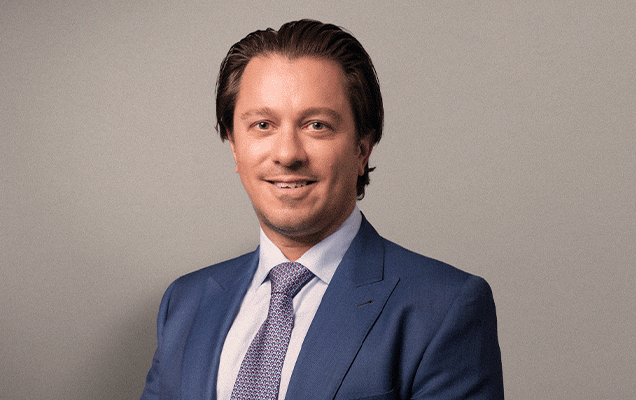As a parent, observing any irregularity in your child’s development can be a source of anxiety. One such condition that affects infants is craniosynostosis, a birth defect where one or more of the sutures in a baby’s skull close prematurely. If your child is diagnosed with this condition, it’s natural to have many questions and feel anxious. This guide aims to provide a clear understanding of craniosynostosis, its treatment options, and what you can expect during the treatment process.
What Is Craniosynostosis?
Craniosynostosis happens when the sutures, which are like seams between the bones in a baby’s skull, close up sooner than they should. This early closure can change the way the skull grows and might affect the child’s brain development. The head might look unusual in shape, and there could be extra pressure inside the skull. Detecting this condition early is crucial because getting treatment in time can prevent problems like developmental delays.
This condition has different types depending on which suture closes early. For example, in coronal synostosis, the suture going across the top of the head from one ear to the other fuses too soon. There are other types too, like sagittal synostosis, where the suture on the top of the head closes early, and metopic synostosis, which affects the forehead area. Recognizing and treating craniosynostosis early helps avoid issues with brain growth and greatly aids the child’s development. Knowing about the different types helps doctors decide on the best treatment for each child, aiming for the best possible growth and development.
Symptoms and Diagnosis
Parents might notice a misshapen skull or lack of a soft spot on their baby’s head. In some cases, there may be a noticeable ridge along the affected suture or a lack of symmetry in the head shape. These signs are generally apparent early at birth as sutures are closed pre-maturely. The head shape will continue to worsen with age and the diagnosis can be made clinically within the first couple of months of life.
Diagnosis typically involves a physical examination with characteristic head shapes leading an experienced neurosurgeon to a clinical diagnosis. Sometimes, a CT scan is used to provide detailed images that confirm whether sutures have closed prematurely.
It's time to get back to doing what you love.
Craniosynostosis and Developmental Delays
If untreated, craniosynostosis can lead to complications. Pressure on the brain may affect its function, leading to developmental delays, learning difficulties, or vision problems. These complications underscore the importance of early intervention.
Exploring Treatment Options
Treating craniosynostosis usually means the child will need surgery to fix the shape of their skull and make sure there’s enough room for their brain to grow properly. The surgery aims to open up the fused sutures of the skull to prevent any pressure on the brain and to make sure the head shape is normal. This is important not only for the child’s appearance but also for their brain development and overall health.
Depending on the child’s specific situation, doctors will choose the best type of surgery. Some surgeries are less complex and involve smaller cuts, while others might be more extensive, depending on how severe the craniosynostosis is. After the surgery, doctors will keep a close eye on the child’s recovery and growth. They might also recommend wearing a special helmet to help the skull shape as the child grows.
- Minimally Invasive Procedures:
- Endoscopic Strip Craniectomy: This minimally invasive technique involves making small incisions and using an endoscope to remove the affected suture(s). It allows for less invasive access and typically results in smaller scars and reduced recovery time compared to more extensive procedures. This is the ideal procedure for children and relies on early diagnosis and referral to an experienced pediatric neurosurgeon.
- Advantages: Minimally invasive procedures often involve smaller incisions, reduced blood loss, shorter hospital stays, and quicker recovery periods. They also carry a lower risk of certain complications associated with larger surgeries.
- Helmet Therapy: After minimally invasive surgery, helmet therapy is usually necessary for several months. This therapy helps to guide the skull into a normal shape while the sutures are healing and the brain is growing.
- Considerations: While these procedures offer faster recovery, they may not be suitable for all types of craniosynostosis or severe cases that require more extensive correction. Additionally, this approach is suitable for children under 6 months of age.
- Cranial Vault Remodeling:
- Fronto-orbital Advancement, Posterior Vault Remodeling, etc.: These procedures involve larger incisions and more extensive reshaping of the skull to correct abnormal growth patterns. Surgeons reposition and reshape the bones to allow for proper skull expansion and brain growth.
- Advantages: Cranial vault remodeling allows for a more comprehensive correction of skull shape abnormalities and is effective for more severe cases of craniosynostosis. It can address multiple sutures simultaneously and provide more predictable outcomes in certain complex cases.
- Considerations: These surgeries are more invasive, often requiring longer hospital stays and recovery times. They may also carry a higher risk of blood loss, infection, and other complications compared to minimally invasive procedures.
The choice between minimally invasive techniques and cranial vault remodeling depends on various factors, including the age of the child, the type and severity of craniosynostosis, and the surgeon’s expertise. A thorough evaluation by a pediatric neurosurgeon is essential to determine the most suitable approach for each individual case.
In summary, while minimally invasive procedures offer quicker recovery and less invasiveness, they might be limited in addressing certain types or severities of craniosynostosis. Cranial vault remodeling provides more extensive correction but involves greater invasiveness and longer recovery times. The decision should prioritize the best balance between achieving optimal correction and minimizing risks and recovery for the child.
Long-Term Outlook
When children receive the right treatment quickly, they usually do very well in managing craniosynostosis. It’s crucial for these kids to have regular doctor visits so that their growth and development can be watched closely. These check-ups help make sure the child’s head is growing correctly and that their brain has enough room to develop properly.
If craniosynostosis is just one part of a larger genetic condition, the child might need extra medical attention. This could mean seeing different kinds of doctors and specialists who will work together to take care of the various health issues that can come with the genetic condition. It’s important for the family to keep up with all the recommended doctor visits and treatments to help the child grow and develop well. Families might also find it helpful to connect with support groups or resources for additional guidance and support through this process.
Final Thoughts
While a diagnosis of craniosynostosis can be daunting, understanding the condition and its treatments can help alleviate concerns. Early diagnosis and intervention are key to providing the best outcomes for your child. Advances in surgical techniques have improved the treatment process, making it less overwhelming and helping children lead healthy lives. Always work closely with your healthcare team to ensure your child receives comprehensive care throughout their treatment journey.

About Dr. Luigi Bassani
Dr. Luigi Bassani is an accomplished board-certified neurosurgeon in Central Jersey and a proud member of Neurosurgeons of New Jersey, practicing out of their Livingston office. Dr. Bassani specializes in the diagnosis and treatment of a broad range of pediatric brain and spinal cord tumors and deformities including but not limited to pediatric epilepsy, cervical spine trauma, brain cancer, brain and skull growth abnormalities, and blood vessel disorders. In 2015 and 2017, he was named New Jersey’s Favorite Kids’ Docs for Pediatric Neurosurgery. Dr. Bassani also utilizes minimally invasive surgical techniques to treat adult patients suffering from brain tumors, herniated discs, and spinal trauma or degeneration. He’s accepting new patients.






